Photo Gallery: Melk Abbey, Austria
Melk Abbey in the Town of Melk in Austria, sits on a hill overlooking the town and the Danube River nearby. This Benedictine Abbey has been on this site since 1089, but fell to fire in 1297. What we see today is an 18th century rebuild in the Baroque style. It is a UNESCO World Heritage Site and is famous for its frescoes and its extensive library. (If you’ve read Umberto Eco’s The Name of the Rose (excellent book) you may remember the apprentice character’s name was Adson von Melk.)
A statue in the town square in the shadow of the Abbey.
A local cheesemonger in Melk.
A view of the Abbey of Melk from the steps up to it. The monastery school inside was founded in 1160 and today is a co-ed facility of more than 900 students in secondary and preparatory school.
Pictured here is one of the Abbey church’s “catacomb saints.” Relics were important and brought prestige to churches and wealth to their inventors, er, discoverers. In the 16th century the Roman catacombs were being plundered for good skeletons, especially those found with or nearby Christian imagery. What else could they be but early martyrs? They were given names and back stories and moved into churches throughout Europe, often displayed in glass cases. This one, named St. Clemens, was given to the abbey in 1722 by a cardinal from Vienna.
The ornate ceiling of the abbey church.
An example of High Baroque, the abbey church is very impressive.
The spiral staircase connecting the library to two upper floor reading rooms.
The west side of the Melk Abbey.
The view from the abbey’s terrace on its west side.
This is the marble hall, a gorgeous room with a 1731 fresco by Paul Troger and an optical illusion framing it. The architectural painting, done by Gaetano Fant, gives the impression that the ceiling rises up and curves higher than it does. It is, in fact, flat.
The Marble Hall served as a dining room for guests and for festivals.
A museum guide demonstrates a very complicated lock box that operated with this single key. There was quite a clanging of metal when all the parts moved together into the locked position.
One of the first attempts at green burials. Too broke to afford your own casket? Use this recyclable one. The dead were lowered into the ground and then dropped out of the bottom as the coffin was retrieved for another use. Not very popular, from what I understand.
The abbey has a nice museum chronicling the ages of the abbey, and each room is lit up with a symbolic color. I had to color correct like crazy to get this tiny monk prayer book to look relatively normal as it was in a room completely filled with blue light.
One of the hallways in the abbey.
The clock in the abbey courtyard on the east side. A mural is painted on each of the four sides of the courtyard.
Melk Abbey is not just an historical relic. The church and monastery school are still quite active. These murals in the courtyard are modern additions but blend in well with the look of the place. Each is a representation of the four virtues: Prudence, Justice, Fortitude, and Temperance.

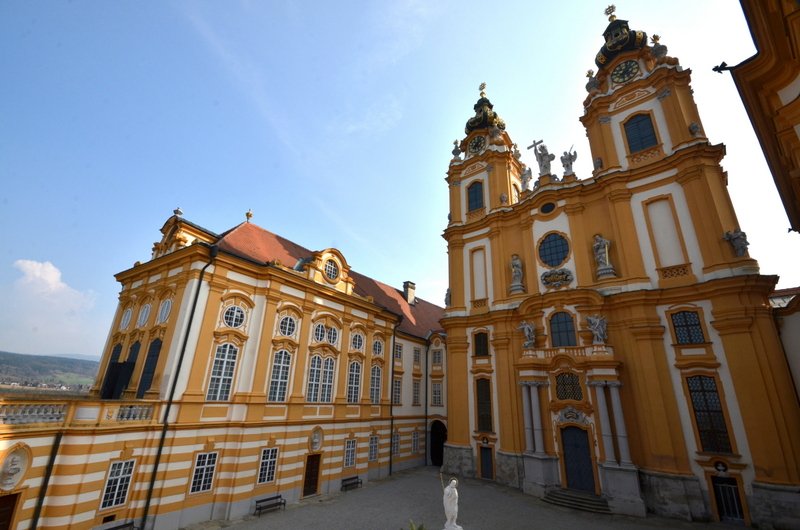
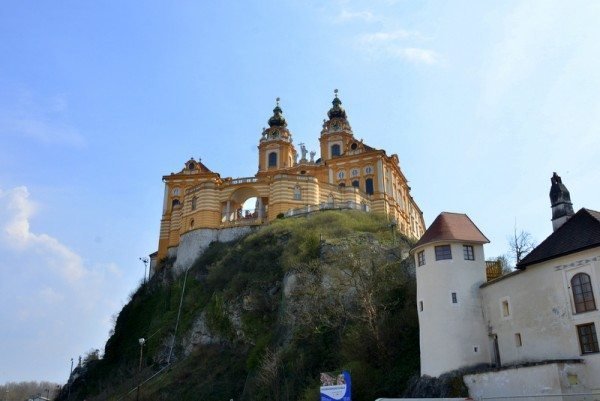


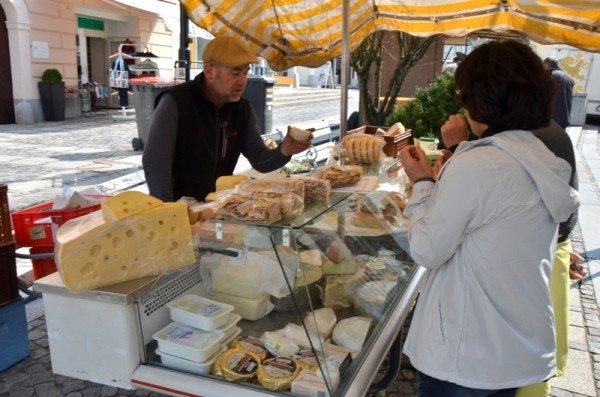
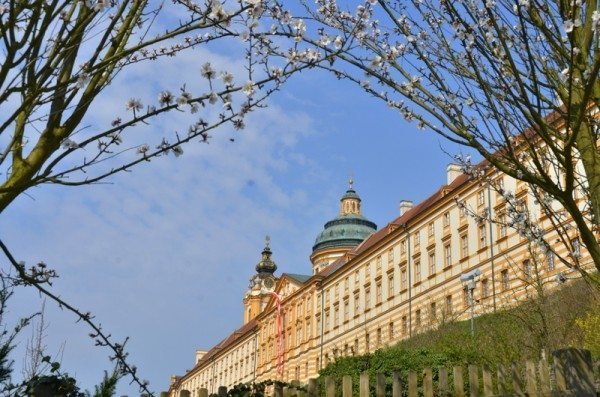

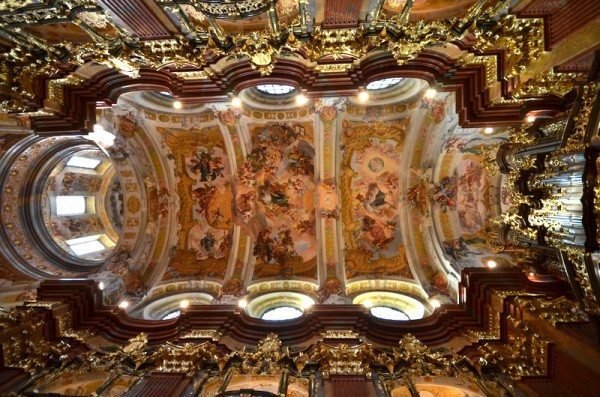








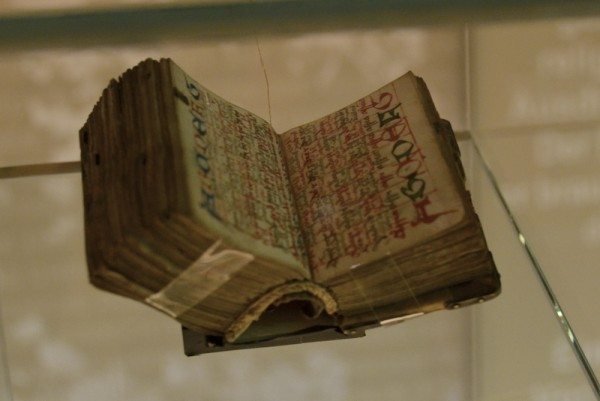

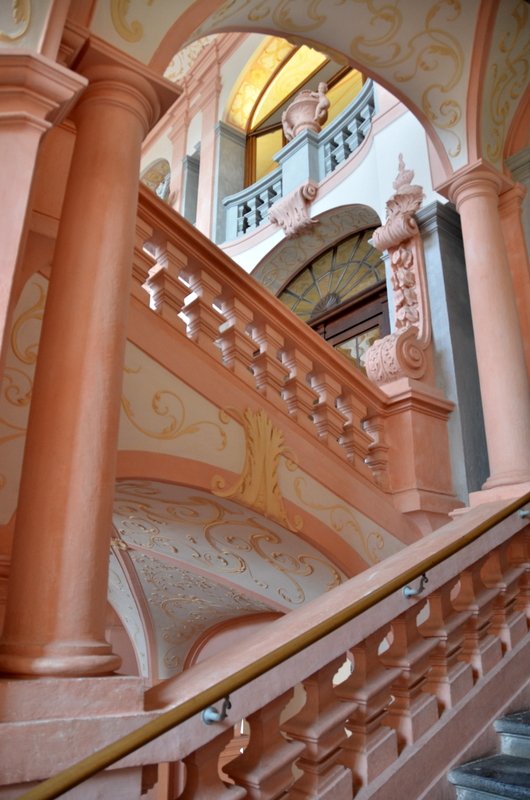
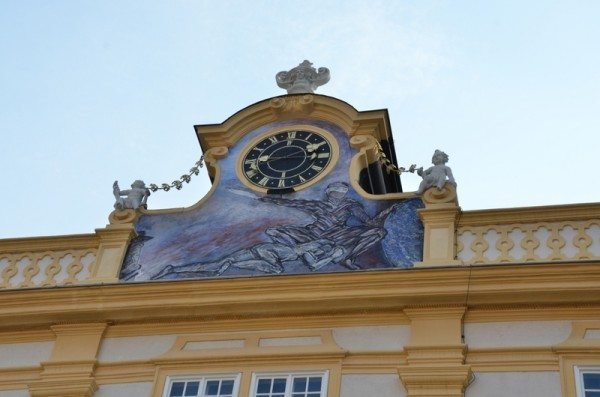


 ORDER YOUR COPY TODAY!
ORDER YOUR COPY TODAY! ORDER YOUR COPY TODAY!
ORDER YOUR COPY TODAY!
Pingback: Cruising the Danube River: A Visit to Melk
Pingback: Biking the Danube River: Shore Excursion
Pingback: Prague Day Trip: The Bone Church of Sedlec and Kutna Hora
Pingback: Thư viện cổ tại tu viện Melk ở Áo sừng sững trên vách đá cạnh sông Danube